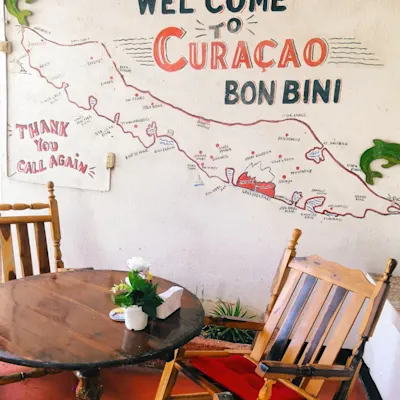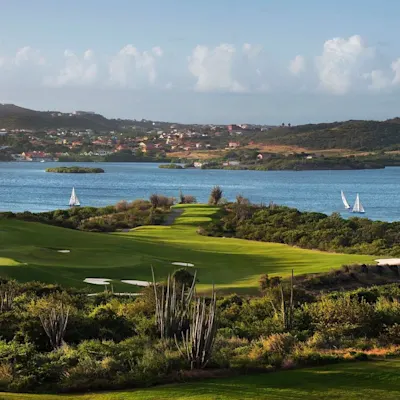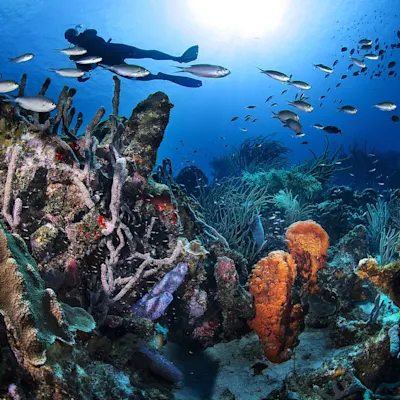June 27, 2019
HOW CURACAO’S PEOPLE FIGHT TO KEEP THEIR ISLAND THE MOST COLORFUL ISLAND IN THE CARIBBEAN
By: Matthew Meltzer

AS SOON AS HE smelled the cigarette, Miguel was not having it.
“Hey!” he yelled at a doughy man walking up the rocky path to the top of Curaçao’s Mount Christoffel. “Put that out! The hell you doing?”
The man with the lit cigarette looked up like he was about to get mugged. Miguel, our hiking guide, stood uphill from him, his large, dark frame a menacing sight from below. The man nervously extinguished his cigarette on the closest rock.
“Don’t throw that on the ground either,” Miguel added. The man nodded and threw his cigarette butt in his half-empty water bottle.
“That idiot’s out of water now,” Miguel said to us. “People don’t think. How are you gonna mess this up by lighting up a cigarette? And you’re climbing a mountain! How do you even breathe?”
Miguel had been calm and funny to this point, a middle-aged lifelong Curaçaoan who had climbed Christoffel, Curaçao’s highest point, 122 times. He spoke of God often and his family almost nonstop. But somehow the cigarette made him snap into a sweaty, shirtless Smokey the Bear in a headband.
“We take our nature seriously,” Miguel said as we reached the top, where bright yellow and green hills led to the deep blue Caribbean. “It’s a big part of our lives.”
Throughout this Dutch Caribbean island, you’ll find people like Miguel, whose personalities shine almost as brightly as the glimmering water around them. They, along with its mountains, coral reefs, and tropical animals, make Curaçao the most colorful place in the world’s brightest region.
A pastel downtown that mirrors the reefs below
“The Caribbean’s brightest island” seems like an obvious superlative when strolling through Willemstad, the capital city of this special Dutch municipality. The UNESCO World Heritage site looks more like a toy city, with narrow, pitched-roof buildings in bright colors straight out of the opening of Mister Rogers’ Neighborhood.
The colors extend into the landscape, with glowing turquoise waters and bright green mountains framing the sorbet shop of architecture below. Colors also thrive below the surface, where one of the healthiest reefs in the world is vigilantly protected by Curaçao’s people.



While trolling out from the Santa Barbara Beach Resort to Eastpoint, said by many to be the richest dive site on the island, a man in a rickety red fishing boat sped up next to us. He was wildly pointing and gesturing, yelling unprintable things in Papiamento. I had no idea what he was screaming, but I’m sure it was unprintable.
“This guy a pirate?” the Midwestern sales manager sharing the dive boat with me asked our guide. He seemed about as concerned with this potential “pirate” as he would with the animatronic ones on a Disney ride.
Our dive guide snickered.
“Fisherman,” the guide said. “Thinks we snapped his line when we drove by. Maybe we did, but he’s not supposed to be fishing over here anyway.”
The captain gestured back equally as angrily at the man in the red boat, pointing emphatically at the water and shaking his head.
“Captain is telling him he’s not supposed to be out here,” the guide said. “The guy is saying how’s he supposed to make money with tourists out here diving. We all gotta share, you know?”
Underwater the reef’s colors made us immediately forget about the altercation on the surface. Curacao sits in a part of the Caribbean that almost never sees major storms, so the reef is among the world’s healthiest and most pristine. Bright purple and gold coral walls fed fish that shined electric blue and vibrant yellow. The reef seemed like an undersea embodiment of the skyline in Willemstad. Or rather, the skyline was paying tribute to the reef. Click here to read the full article:







